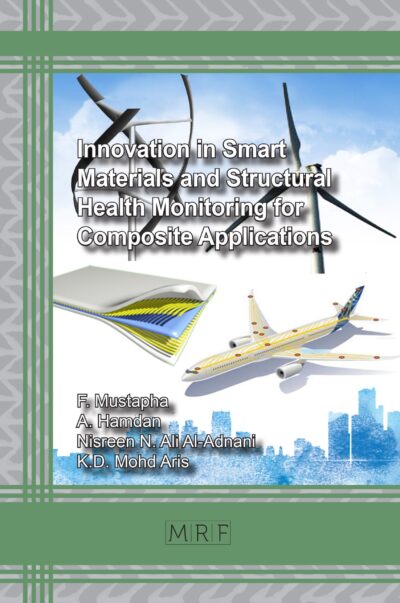Tailor-Made Net-Shape Composite Components by Combining Additive Manufacturing and Hot Isostatic Pressing
RIEHM Sebastian, KALETSCH Anke, BROECKMANN Christoph, FRIEDERICI Vera, WIELAND Sandra, PETZOLDT Frank
download PDFAbstract. A promising production route for high quality tailor-made parts can be established by combining Additive Manufacturing (AM) and Hot Isostatic Pressing (HIP): By using a numerical simulation routine, the shape change during HIP can be controlled. These shape-controlled parts are built by Laser Powder Bed Fusion (L-PBF) and consolidated by HIP. After HIP, they exhibit a net-shape geometry that requires only little or even no post-processing at all. In this study, open thin-walled capsules are manufactured by L-PBF, filled conventionally with metal powder, evacuated and sealed and hot-isostatically pressed. Using this processing route, it is possible to combine different materials for the capsule and the powder filling. If capsule and bulk material are identical, the expensive removal of the capsule after HIP can be omitted. By using two different powders, it is possible to produce composite components with a core of high strength and toughness and a wear- or corrosion-resistant surface layer, offering an alternative and competitive production route to conventional HIP cladding. Here three materials are investigated in different combinations: austenitic stainless steel AISI 316L (DIN X2CrNiMo17-13-3), martensitic tool steel AISI L6 (DIN 55NiCrMoV7) and the wear resistant high carbon steel AISI A11 (DIN X245VCrMo8-5-1). A number of technical challenges need to be addressed: the production of dense, thin-walled capsules by L-PBF; L-PBF of carbide rich steels; and controlling the diffusion between corrosion resistant steel and carbon steel. The success of the new process route is demonstrated by metallographic and geometrical investigations.
Keywords
HIP, Hot Isostatic Pressing, Additive Manufacturing, LBM, L-PBF, SLM, Composites, Numerical Simulation, Net-Shape
Published online 2/11/2019, 7 pages
Copyright © 2019 by the author(s)
Published under license by Materials Research Forum LLC., Millersville PA, USA
Citation: RIEHM Sebastian, KALETSCH Anke, BROECKMANN Christoph, FRIEDERICI Vera, WIELAND Sandra, PETZOLDT Frank, Tailor-Made Net-Shape Composite Components by Combining Additive Manufacturing and Hot Isostatic Pressing, Materials Research Proceedings, Vol. 10, pp 203-209, 2019
DOI: https://dx.doi.org/10.21741/9781644900031-27
The article was published as article 27 of the book Hot Isostatic Pressing
![]() Content from this work may be used under the terms of the Creative Commons Attribution 3.0 licence. Any further distribution of this work must maintain attribution to the author(s) and the title of the work, journal citation and DOI.
Content from this work may be used under the terms of the Creative Commons Attribution 3.0 licence. Any further distribution of this work must maintain attribution to the author(s) and the title of the work, journal citation and DOI.
References
[1] H.V. Atkinson, S. Davies, Fundamental aspects of hot isostatic pressing: An overview, Metall and Mat Trans A 31 (2000) 2981–3000. https://doi.org/10.1007/s11661-000-0078-2
[2] C.Y. Yap, C.K. Chua, Z.L. Dong, Z.H. Liu, D.Q. Zhang, L.E. Loh, S.L. Sing, Review of selective laser melting: Materials and applications, Applied Physics Reviews 2 (2015) 41101. https://doi.org/10.1063/1.4935926
[3] A. Kumar, Y. Bai, A. Eklund, C.B. Williams, Effects of Hot Isostatic Pressing on Copper Parts Fabricated via Binder Jetting, Procedia Manufacturing 10 (2017) 935–944. https://doi.org/10.1016/j.promfg.2017.07.084
[4] H. Hassanin, K. Essa, C. Qiu, A.M. Abdelhafeez, N.J.E. Adkins, M.M. Attallah, Net-shape manufacturing using hybrid selective laser melting/hot isostatic pressing, Rapid Prototyping Journal 23 (2017) 191. https://doi.org/10.1108/RPJ-02-2016-0019
[5] H. Masuo, Y. Tanaka, S. Morokoshi, H. Yagura, T. Uchida, Y. Yamamoto, Y. Murakami, Effects of Defects, Surface Roughness and HIP on Fatigue Strength of Ti-6Al-4V manufactured by Additive Manufacturing, Procedia Structural Integrity 7 (2017) 19–26. https://doi.org/10.1016/j.prostr.2017.11.055
[6] V. Friederici, S. Wieland, Laser Beam Melting Of Heat-treatable 56NiCrMoV7 And Wear-resistant FeCrV10 Steel, in: European Powder Metallurgy Association (Ed.), Euro PM2017 Proceedings, 2017.
[7] C. Van Nguyen, Numerical Simulation of Hot Isostatic Pressing with Particular Consideration of Powder Density Distribution and Temperature Gradient, 1st ed., Shaker, Herzogenrath, 2016.














